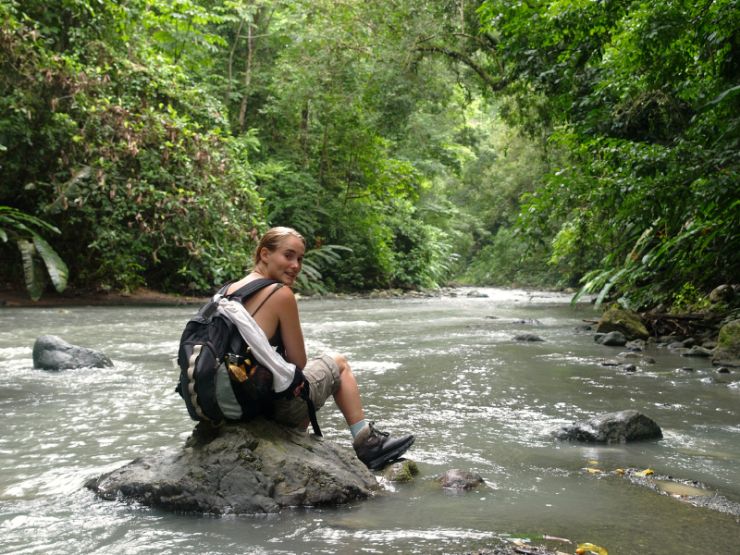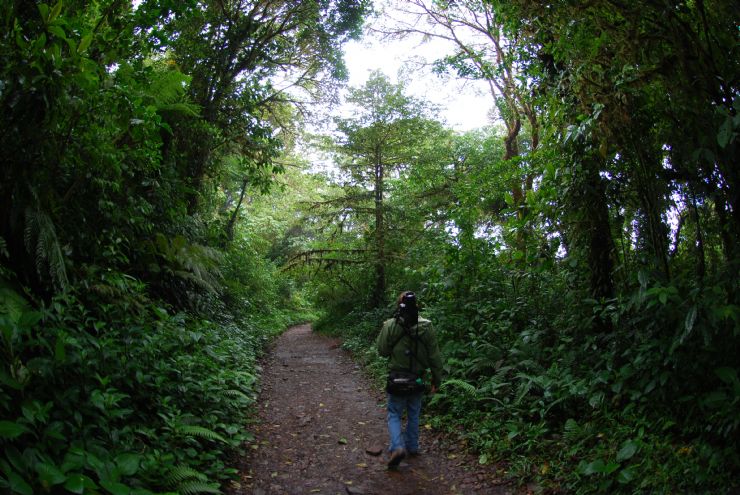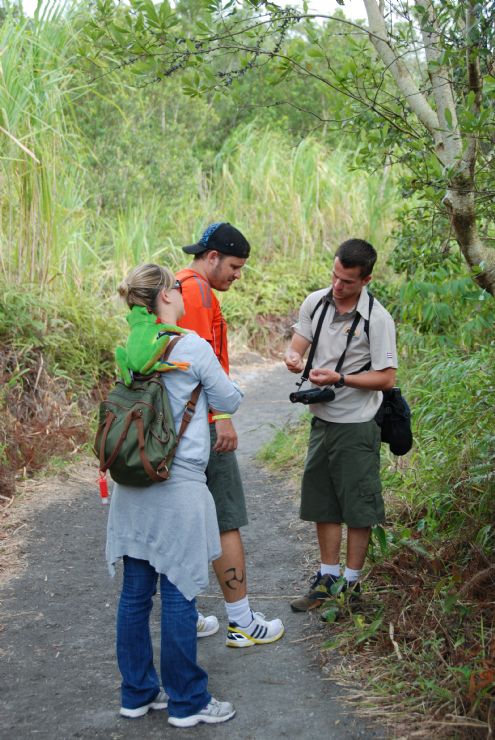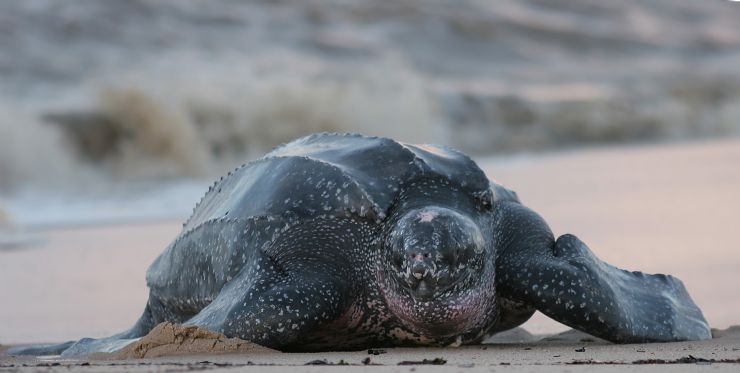.jpg)
Manuel Antonio National Park Sign
Costa Rica is ranked as one of the top eco-friendly destinations in the world, with 25 percent of the land protected or conserved. Many believe this trend stems from a book that was published in the late 1980s by F. Gary Stiles and Alexander Skutch called "A Guide to the Birds of Costa Rica". This bird-watching guide drew more people to the area and a plan for nation-wide tourism was born. Costa Rica is home to a rich and diverse environment where thousands of flora and fauna species live - but you probably already know that. As a tree frog, I've always been pleased with the way humans enjoy my country; it makes me feel like a celebrity!
Costa Rica is one of the safest and most politically and socially stable countries in Central America. Considered a peace-loving country, more citizens have become increasingly enthusiastic about preserving and growing their environment. Costa Ricans are among the world's most avid tree planters - several million trees are added to the country per year! This helps put the country along its path to be the first carbon neutral country by 2021, which was vowed by the Costa Rican government in 2007.

Hiker sitting on rock in river at Corcovado National Park
7 Days / 6 Nights
Starting at $779 per person
Between 1950 and 1978, Costa Rica's economy began to prosper with industrial and agricultural diversity. The unemployment rate decreased and literacy increased as the population grew and San Jose turned into a small bustling city. But when the prices of coffee decreased and the oil industry was hit in the 1980's, everything that was looking positive in the country began to slowly turn downward. The unemployment rate went from 5 to 10 percent and there was a hyperinflation of almost 100 percent annually. Around the same time that the tourism sector started to turn, Costa Rica's National Park Services was created, and by 1998 all natural reservations were organized under the National System of Conservation Areas.
Government officials placed an emphasis on the commitment to protect the diverse and fragile ecosystems in the country. While this was primarily only a concern for small groups of people during the 1970's and 80's, it became important to the local communities throughout the next couple decades. With efforts to improve environmental education, locals gained a sense of pride in their country and began living with a higher standard for environmental safety. By the early 1990's, Costa Rica was deemed as the leading ecotourism country in the world, and a huge influx of travelers began seeking the hidden natural gems of the country.

Guide looking for animals in the Monteverde Cloud Forest Reserve
The National System of Conservation Areas (SINAC) is a part of the Ministry of Environment and Energy (
MINAET) and was created to oversee more than 150 areas that make up the 25 percent of protected land. This landmass is the highest percentage in the world and it includes National Parks, wildlife reserves,
rainforests, wetlands, cloud forests and marine areas. Some of these are also protected sites where endangered or venerable species migrate seasonally.
The incredibly extensive system of protected areas is one of Costa Rica's progressive efforts to protect the environment and create sustainable development to help rehab areas that have been affected over the years. I just fill with pride whenever I here about this! What other countries care so deeply for their plants and animals, including us frogs? From this, many ecological projects and studies have been conducted at universities across the world, which has lent a great amount of knowledge about the importance of protecting and preserving biological diversity. This is considered to be one of the most valuable contributions Costa Rica has made to the rest of the world.

Guide explaining nature facts to tourists
Travelers come to Costa Rica to experience a life that isn't available in many other places in the world. From the diverse ecosystems to the friendly locals, life moves a little bit slower in Costa Rica and sustainability helps churn the desire for more people to visit. Adventurists are able to travel to Costa Rica and get an experience like no other, and create little to no damage to the environment. Scuba diving, hiking,
horseback riding, kayaking and surfing are just a few of the popular activities Costa Rica offers. Plus, there are countless resorts and tourism companies aimed at encouraging sustainability. People are able to appreciate nature first-hand by swimming underneath a crystal clear waterfall, hiking through the
rainforest, witnessing the migration of humpback whales or watching howler monkeys swing through the trees.

Leatherback Turtle coming out of ocean
Certification in
Sustainable Tourism and the Costa Rican Community-based Rural Tourism Association (ACTUAR) both aim to make a difference in the community and environment. Travelers can also consider the Eco-Index Sustainable Tourism by Rainforest Alliance that features businesses that are socially and economically friendly. ACTUAR, established in 2001, was organized to promote rural tourism for travelers who wish to seek a more local getaway instead of staying in a hotel or resort.

